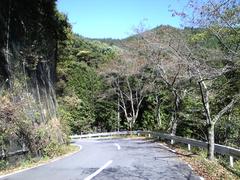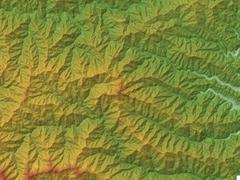
Futase Dam Visiting Hours, Tickets, and Travel Guide – Chichibu Historical Site
Date: 04/07/2025
Introduction
Futase Dam, nestled in the picturesque Chichibu region of Saitama Prefecture, Japan, stands as a testament to postwar Japanese engineering and regional revitalization. Built between 1952 and 1961 on the Arakawa River, this arch-gravity dam was envisioned for flood control, irrigation, and hydroelectric power—crucial to Japan’s rapid economic development in the Showa era. Today, Futase Dam not only supports essential infrastructure but also serves as a gateway to Chichibu’s stunning natural landscapes and rich cultural heritage.
Visitors can expect panoramic mountain and reservoir views, accessible walkways, informative displays on environmental engineering, and proximity to attractions such as Chichibu Shrine, Hitsujiyama Park, and Mitsumine Shrine. Whether arriving by car or public transit, Futase Dam is easy to reach and free to enter, making it an ideal destination for day trips or longer explorations. This comprehensive guide details visiting hours, ticket information, accessibility, travel tips, and highlights of nearby sites to help you plan your journey.
For in-depth historical and technical background, see Wikipedia and Japanrar.
Table of Contents
- Introduction: Discover Futase Dam and Its Surroundings
- Historical Context
- Engineering and Environmental Features
- Visiting Futase Dam: Hours, Admission, and Access
- Nearby Attractions and Chichibu Highlights
- Special Events and Guided Tours
- Visitor Tips and FAQs
- Visual Gallery
- Additional Resources
- Summary & Further Exploration
Historical Context
Postwar Infrastructure and Regional Impact
Futase Dam’s construction was part of Japan’s broader postwar reconstruction, addressing urgent needs for flood mitigation, water management, and electricity. The Arakawa River, historically prone to flooding, threatened both local communities and the Tokyo metropolitan area. The dam project provided employment, modernized Chichibu, and turned the area into a scenic and recreational destination (Wikipedia, Japanrar).
Engineering and Environmental Features
Structure and Function
- Type: Arch-gravity dam—combines the strength of an arch with gravity-based stability, ideal for the narrow, rocky Arakawa valley (Wikipedia).
- Dimensions: Reservoir covers 76 hectares, stores up to 26.9 million cubic meters of water, with a 170 km² catchment area.
- Purpose: Flood control, agricultural irrigation, and hydroelectric power generation for the Chichibu basin and beyond (Japanrar).
Environmental Stewardship
Sediment accumulation threatened the dam’s efficiency. Since 2003, innovative sediment management—including ecological monitoring and controlled sediment release—has helped restore river health and support local wildlife, such as the Japanese fluvial sculpin (Kensetsukankyo Research Report on Sediment Management).
Visiting Futase Dam: Hours, Admission, and Access
Hours and Admission
- Open: Daily, typically from 8:00 AM to 5:00 PM. Hours may vary seasonally; confirm with local tourism offices.
- Admission: Free. No tickets required for general entry or observatories.
Access
- By Car: About 30 minutes from central Chichibu via Route 140, then Prefectural Road 278 (search for “Chichibu Lake” in GPS) (Seasons Japan: Futase Dam Touring Guide).
- By Public Transport: Take Chichibu Railway to Chichibu Station, then local bus or taxi. Buses to Mitsumine Shrine cross the dam.
- Parking: Ample space near the dam and main observatories.
- Accessibility: Paved walkways and accessible restrooms are available. Some paths and the crest road may be narrow or uneven.
Nearby Attractions and Chichibu Highlights
Natural Sites
- Chichibu-Tama-Kai National Park: Dramatic mountain scenery, including Mount Buko and Mount Kumotori (Japan Whisper).
- Chichibu Lake: The reservoir behind Futase Dam, especially beautiful during autumn foliage.
- Hitsujiyama Park: Renowned for shibazakura (moss phlox) fields in spring (Attractions Near Me).
- Nagatoro Valley and Iwadatami Rocks: Famous for scenic riverside walks, cruises, and autumn leaves (Japan Whisper).
Cultural and Historical Sites
- Chichibu Shrine: 1,000-year-old shrine with ornate carvings and major festivals (Japan Whisper).
- Mitsumine Shrine: Mystical mountaintop shrine, accessible via the dam road (Mitsumine Shrine Official Site).
- Hodosan Shrine: At the foot of Mount Hodo, reachable by ropeway with panoramic views (Attractions Near Me).
- Chichibu 34 Kannon Pilgrimage: Historic Buddhist temple route (Japan Whisper).
Outdoor Activities
- Hiking: Trails up Mount Buko and Mount Kumotori, plus lakeside and valley walks (Tsunagu Japan).
- Water Recreation: Kayaking, rafting, and fishing in the Arakawa River and reservoir (Attractions Near Me).
- Geological Exploration: Visit Chichibu Geo Museum for regional geology (Tourist Places Guide).
Notable Infrastructure
- Urayama Dam: Nearby gravity dam with tours and scenic views (Tsunagu Japan).
- Raiden Todoroki Loop Bridge: Iconic engineering feature, popular for scenic drives (Tsunagu Japan).
Special Events and Guided Tours
- Seasonal Events: Chichibu Night Festival (December), cherry blossom and autumn foliage festivals near parks and shrines (Japan Whisper).
- Guided Tours: May be offered through local tourism offices—advance inquiry recommended.
- Photography: Dam crest and observatories provide excellent panoramic shots, especially in early morning or late afternoon light.
Visitor Tips and FAQs
Practical Tips
- Best Time to Visit: Spring (April–May) and autumn (October–November) for flowers and foliage.
- Facilities: Restrooms, parking, and picnic areas available; shops are limited—bring your own snacks and drinks.
- Navigation: Use GPS for “Chichibu Lake” for accurate routing.
- Weather: Mountain conditions can change quickly—dress accordingly.
- Accessibility: Private transport advised; contact local offices for further assistance.
Frequently Asked Questions
Q: What are Futase Dam’s opening hours?
A: Generally 8:00 AM–5:00 PM, but may vary seasonally.
Q: Is there an entrance fee?
A: No, entry is free.
Q: Are guided tours available?
A: Occasionally, through local tourism offices or during special events.
Q: Is the dam accessible by public transportation?
A: Yes, but options are limited; car access is more flexible.
Q: Is the site accessible for people with disabilities?
A: Yes, main paths and facilities are accessible, though some areas may be challenging.
Q: Can I bring pets?
A: Pets are allowed in outdoor areas if leashed.
Visual Gallery
Alt tags optimized for SEO: ‘Futase Dam visiting hours’, ‘Futase Dam tickets’, ‘Chichibu historical sites’.
Additional Resources
- Wikipedia: Futase Dam
- Japanrar: Chichibu Tourism and History
- Kensetsukankyo Research Report on Sediment Management
- Chichibu City Tourism
- Seasons Japan: Futase Dam Touring Guide
- Mitsumine Shrine Official Site
Summary and Further Exploration
Futase Dam is a must-visit destination that harmoniously blends engineering innovation, environmental stewardship, and cultural depth. Serving as a keystone for regional water management and energy, it also opens the door to Chichibu’s natural wonders and historical treasures. With free entry, accessible facilities, and scenic views year-round, Futase Dam appeals to families, history buffs, photographers, and outdoor enthusiasts alike.
To maximize your visit, plan ahead using the latest information from Chichibu City Tourism and Seasons Japan. For navigation support, local tips, and updates, download the Audiala app and follow our social media channels.
Embrace the blend of modern engineering, breathtaking nature, and living tradition that defines Chichibu and Futase Dam—your gateway to an unforgettable experience in Saitama Prefecture.



